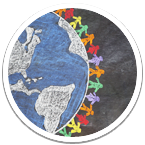Part 10: What to do when you encounter racism?
In part ten, anti-racism expert and Master of Arts (Education) Alice Jäske talks about different ways to act when you encounter racism.
People tend to keep quiet about racism because they consider it to be a difficult topic. However, if we remain silent, we cannot address the issue of systematic racism, which extends beyond individual persons and actions. As a case in point, Jäske introduces viewers to a workplace coffee room and a situation involving racism. This example helps us to understand that preconceived assumptions can give rise to othering and discrimination. Jäske explains what we can do in similar situations, and reminds us that everybody makes mistakes; however, we can learn from them and choose to act differently in the future.
Materials supporting learning
Key concepts:
- anti-racism
Read more about the key concepts.
Reflect on the following questions:
- What should you do when you encounter racism?
- How can you bring up racism in a discussion?
- Why is it better to make mistakes than keep quiet?
- How can you identify your own preconceived assumptions in your actions?
- What should you do if you were told you have acted in a racist manner?




